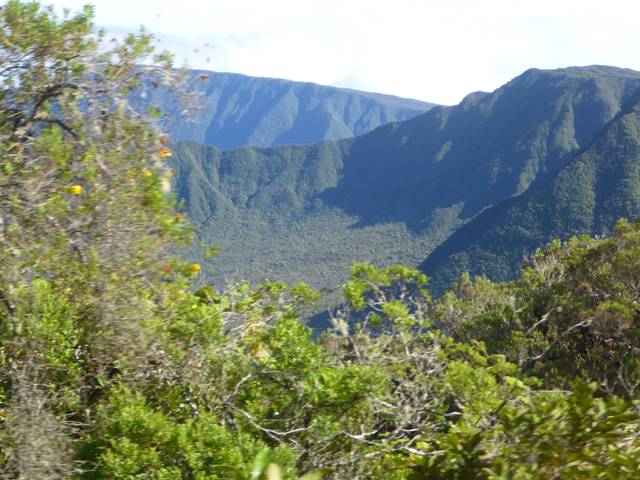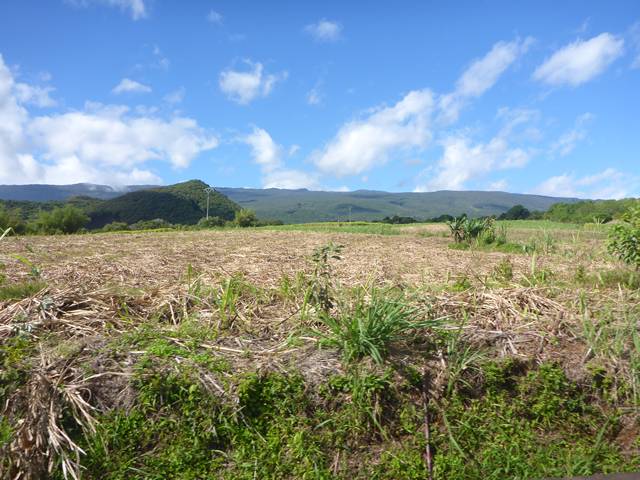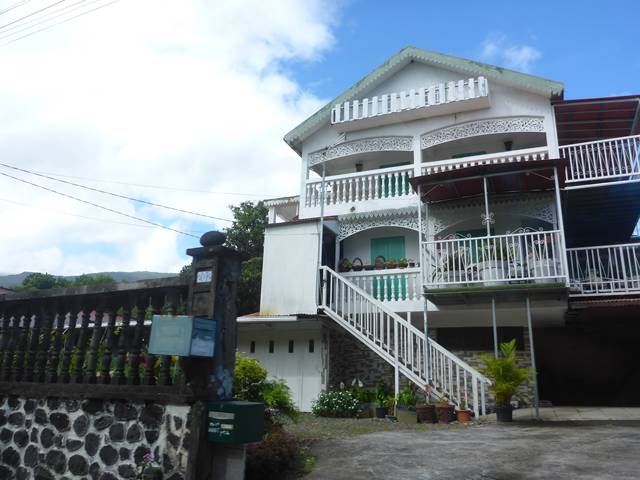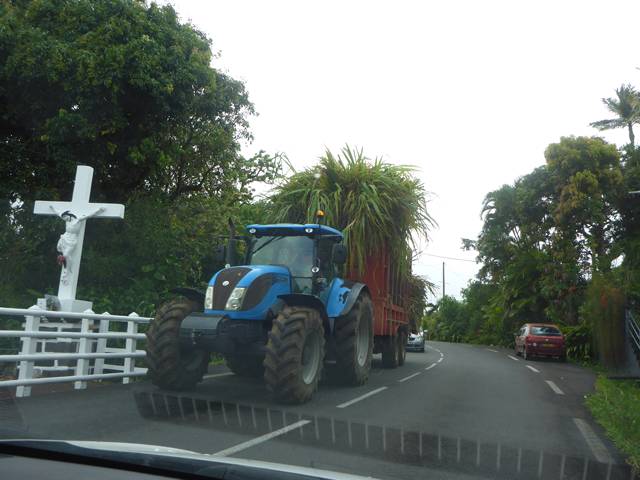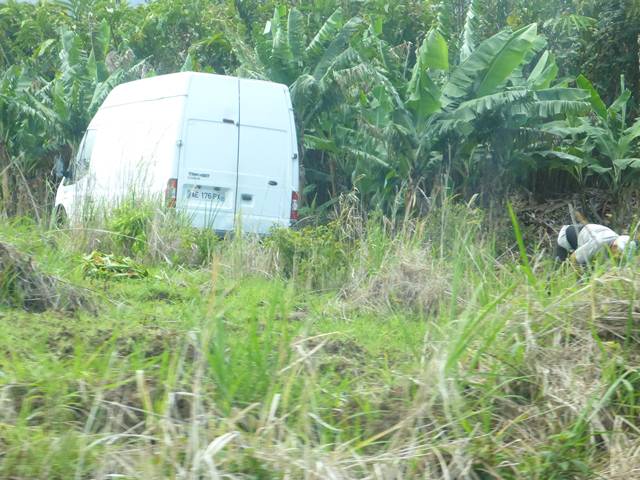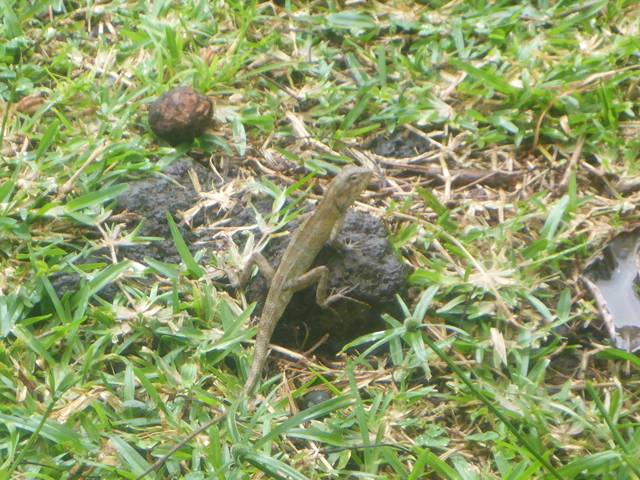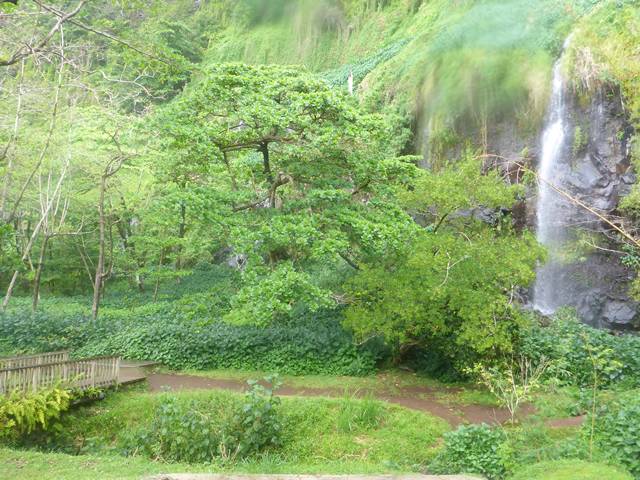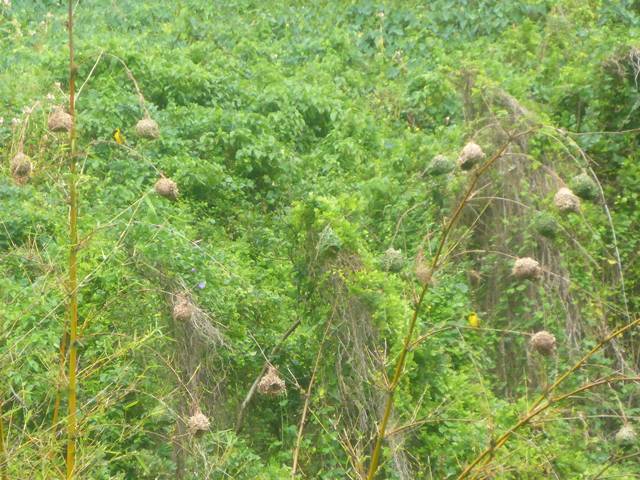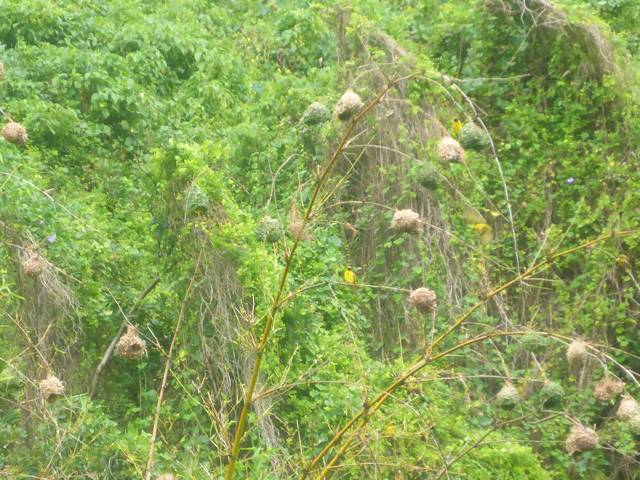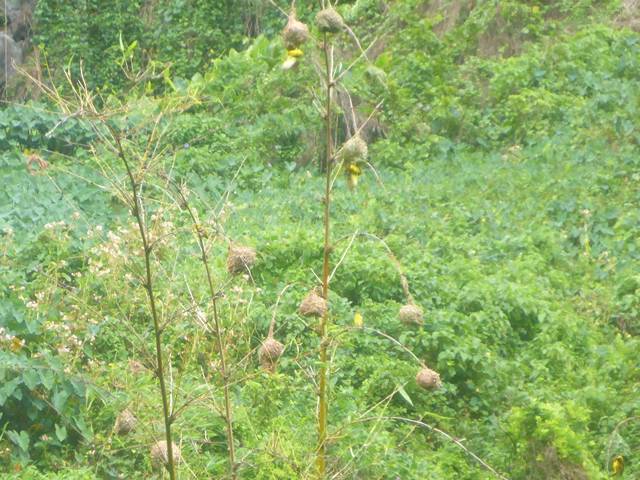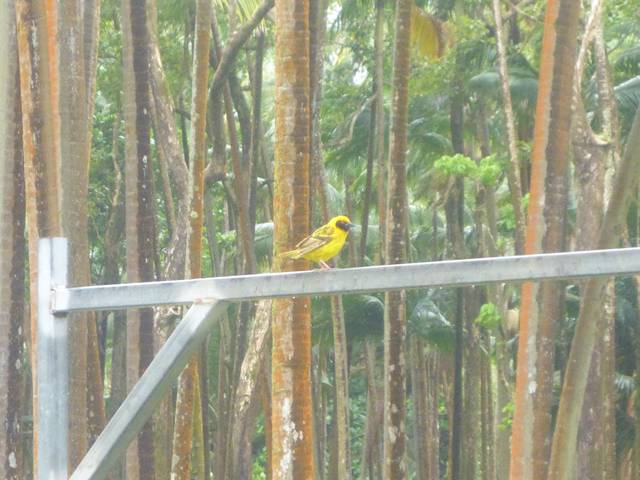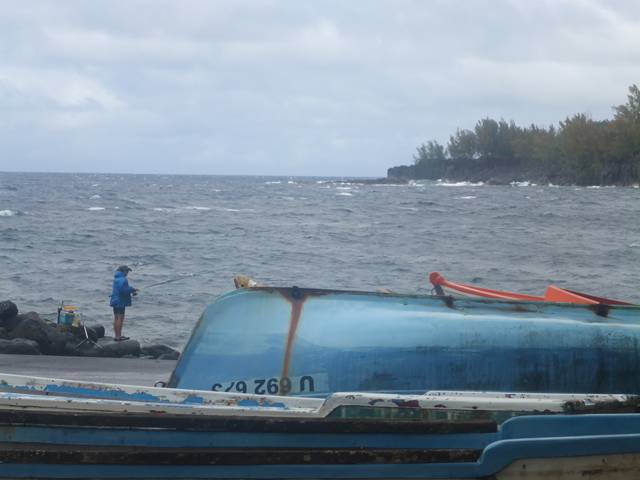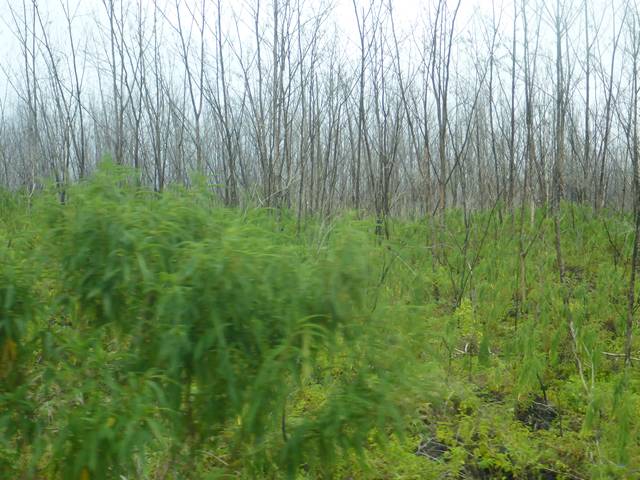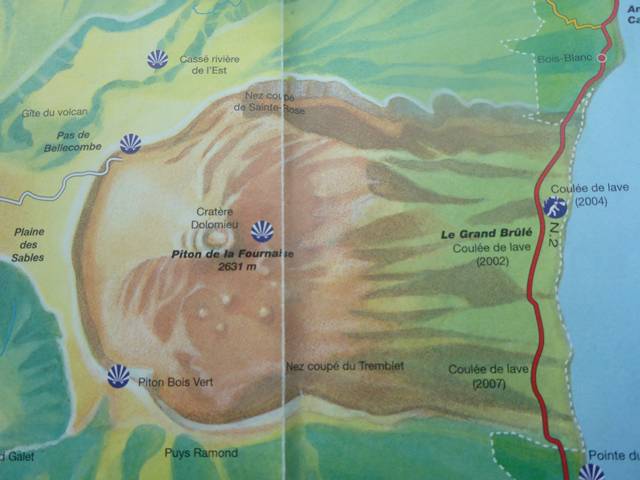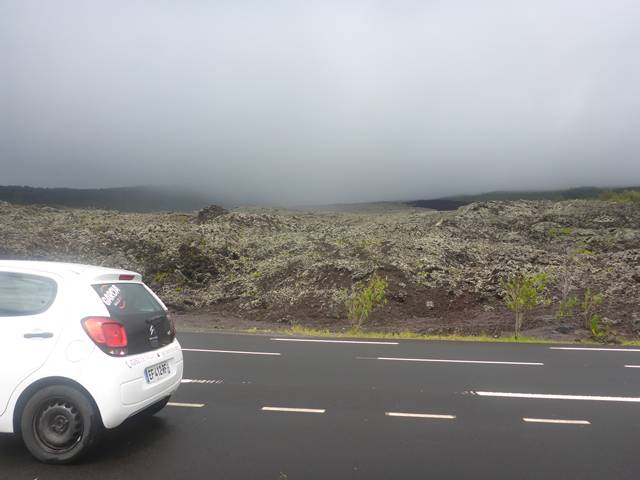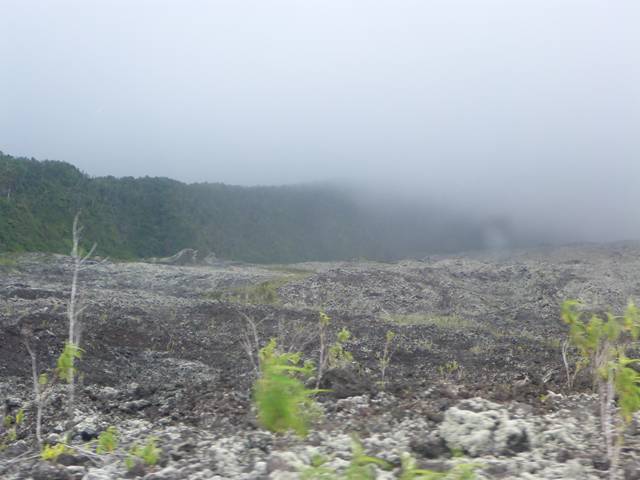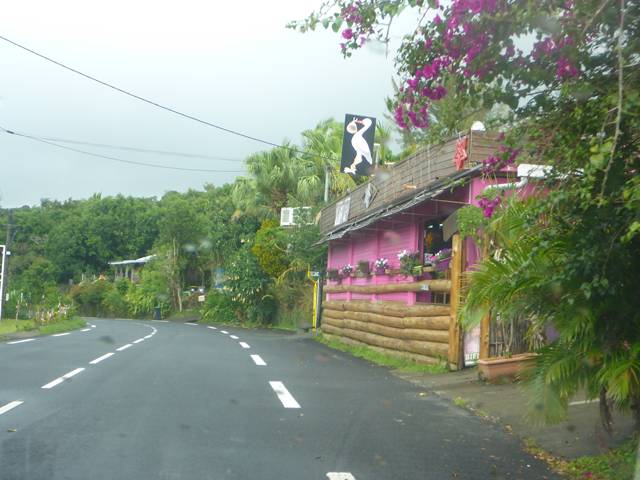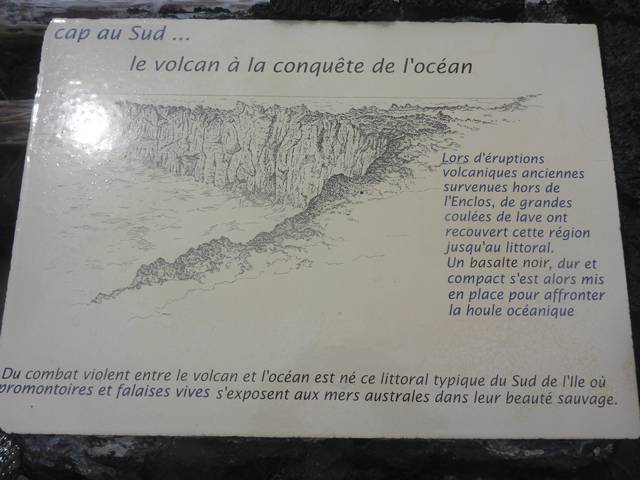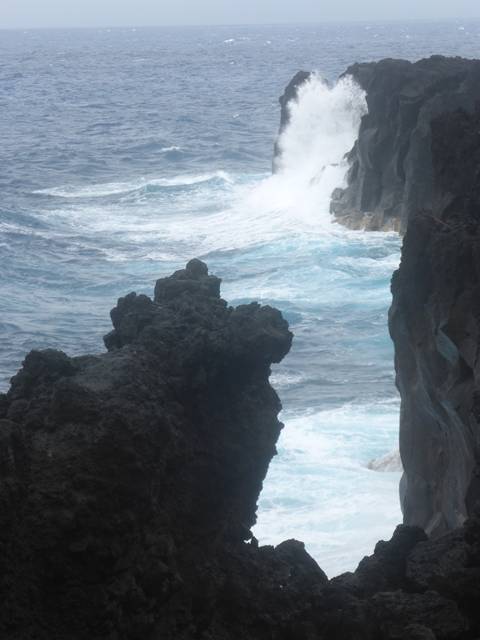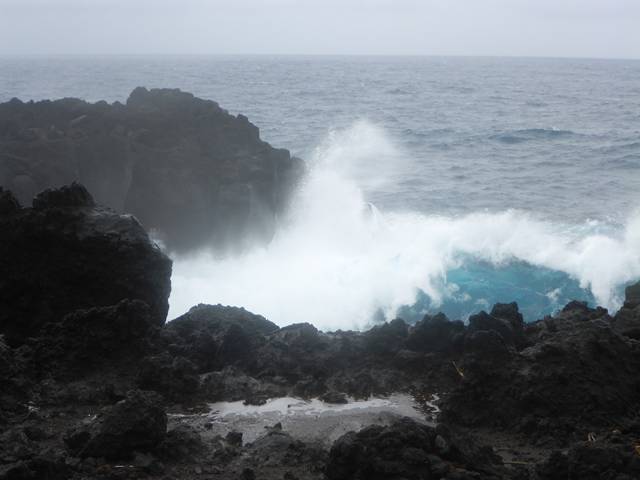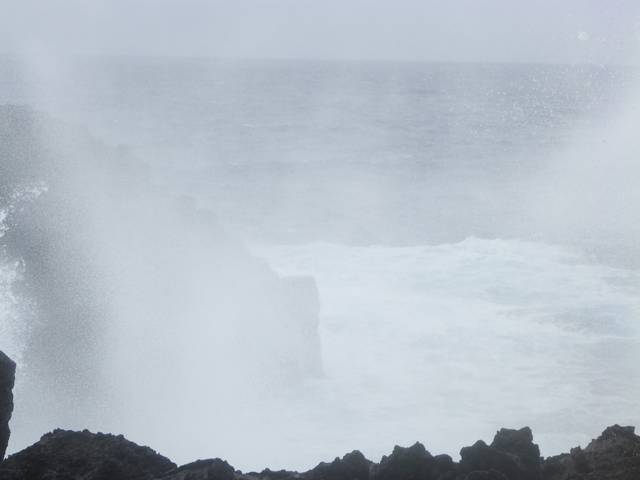Apres le Volcan le Deluge

|
Apres le Volcan le Deluge We had an early, carefully measured, breakfast, “Would you like sugar for your tea?” “Would you care for a yoghurt?” We retrieved our packs from the room, wished the shivering pup a better life than he was getting at the moment, (he would have been happier, warmer and better cared for by the stray muts at the marina!) and made our way back down the N3, over the last of the windy roads and beautiful valley views to another tourne a droite onto the D3 towards an old suspension bridge, no longer in use but an engineering marvel in its heyday. Everywhere in the sugar plantations the odd car or van would be parked up and its occupant tending the young plants or slashing the mature sugar cane. Tractors pulled full loads of the long canes to the local depot ready to be transferred to bigger trailers for the haul to one of the mills for processing. The sides of the road were vertical sided with deep drainage ditches to channel the occasional ‘inundation’ of rainwater from a flash flood running off the heights of volcano, but this is not the Deluge I refer to in the title; more about that a little later. Back down by the coast and working our way clockwise towards the south of the island we drove down a steep road to the Anse de Cascades, the Cove of Waterfalls, which were running well after the rain showers we were experiencing. At first the rain was torrential and we could hardly make out the waters of the cove except for a fisherman trying his luck beneath a black and white umbrella. Launching the small creole fishing boats from here is apparently a tricky and complex activity, but worth it. Then the shower passed and a wander through the park like area along a wooden boardwalk and over a wooden bridge, the sound of frogs was delightfully deafening. A long wall of exposed rock face ran with white skirts of frothing water partially hidden behind the spindly young trees planted since the devastation caused by cyclone Fakir in 2018, but the real treat was visible when I climbed some concrete steps leading to the base of some historical winding or pumping equipment alongside a stream. 20 metres or so away was a stand of bamboo, on each swaying stem hung a carefully woven nest all of which were being attended by yellow birds, Yellow Tisserin, hovering with rapid wing-beats beneath and feeding their young before a quick rest on a nearby perch and then off for another foray for food. I hope you can see the yellow blurs and the resting birds, there is a close up of one near the car. I am not sure why it was quite so spell-binding, perhaps because I had only seen this kind of activity before on the television, but I stood for ages, and Rob joined me just to enjoy the busy scene. The waters of the cove were the theatre of a great battle against the English in 1810, and Anse des Cascades has seen its activity grow since the 19th century and this significant historical episode. The cultures of coffee or corn have, from its origins, made this region a prosperous place. These different cultures were supplanted by that of sugar cane at the beginning of the 19th century. The usefulness of the water from these waterfalls was then proven. Flowing in abundance, it was used for a very long time to supply factories as well as neighbouring villages. Conducted by a channel, possibly the one in the photo, to a paddle wheel, the water was used to start a hydraulic pump, the remains of which are still visible today, possibly where we were standing. The crops of bananas, vanilla, mandarins and palm kernels have gradually emerged in Reunion, making it possible to maintain an important source of income. Mascarene Swiftlets darted across the road as we ascended back to the main N2 highway towards the area I had been looking forward to, the Grand Brule, the road across the ancient and recent lava flows from the Volcan Fournaise. Imagine driving along here and having to turn around rather swiftly because piles of orange molten lava are rolling noisily across in front of you, the hot air all around stinking of rotten eggs. Fortunately it didn’t happen to us and we were able to park and take in the scene of cool, solid rock. The vegetation gave away the age of the flows. Surprisingly quickly algae and lichen forms on the recently cooled lava and then blown seeds germinate and grasses grow followed by spindly trees. A full tropical rain forest takes over three hundred years and I wasn’t sure why all the spindly trees had died unless they were in the path of a subsequent flow. We parked where the flows of 2004 and 2007 had rolled their way to the sea and into the cold waters of the ocean. It was more dramatic than picturesque and we pondered on how frightening it would have been for the people of Tremblet, a small village just beyond the Enclos or raised wall around the flow, who wonder quite often if the latest eruption will engulf their homes. A little way beyond the coastal town of St Philippe is the Cap Mechant (nasty, miserable, terrific in this context) at the base of La Vallee Heureuse, Happy Valley(!) and we strolled around this incredibly wild area where the true vigor of the SW weather and sea was venting itself against the resistant laval cliffs. No wonder this area is known as the Sauvage Sud. I wanted a really good photo of the impact of water on rock for you. I waited and clicked, waited and clicked and then got the image I wanted, and then got very wet!
|
